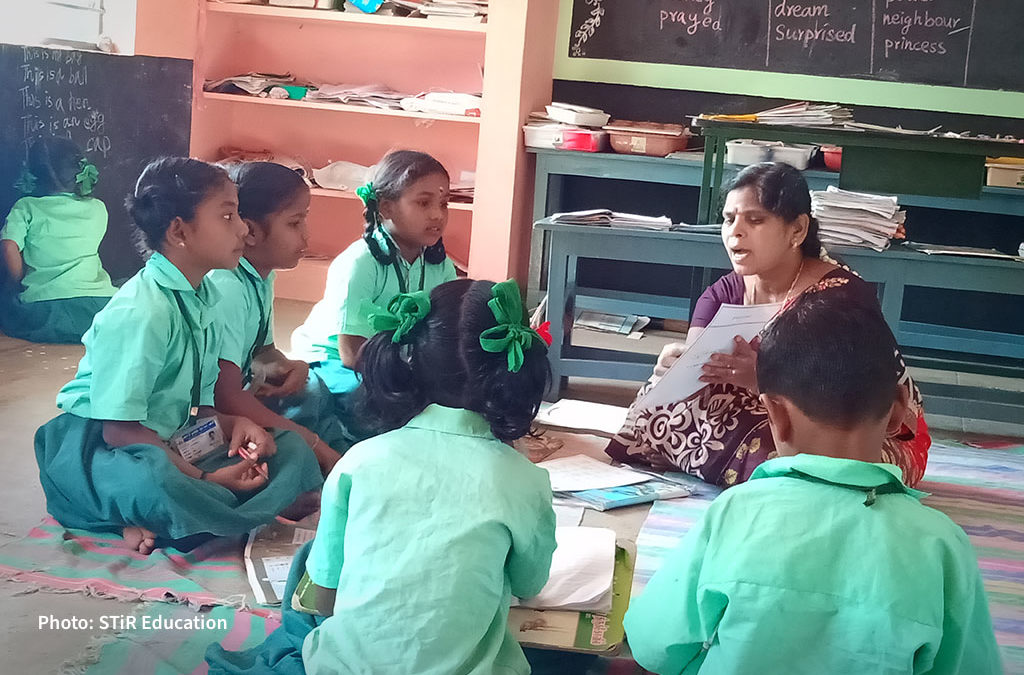by Girish Menon, CEO of STiR Education
The upcoming Global Education Summit for the Global Partnership for Education (GPE), co-hosted by Kenya and the UK, has an ambitious target of raising USD $5 billion to transform education systems in up to 90 countries, so that all children can get a quality education. This is a very laudable mission indeed.
Financing of public education systems is absolutely key, especially in a COVID-ravaged world. Children in low- and middle-income countries are increasingly at risk of serious learning loss, with girls particularly at risk of being pulled out of education systems. Progress on the SDG 4 goal of “inclusive and equitable quality education and promoting lifelong learning opportunities for all’ is off-track (UNESCO SDG4 off-track), and is at serious risk of being more off-track because of the pandemic. On current trends, it is estimated that about 200 million children will be out of school and 63% of children in low- and middle-income countries are at risk of learning poverty, up from 53% pre-COVID (World Bank on learning crisis).
So what should governments prioritize in utilizing these resources? It is likely that a large proportion will be put towards foundational learning, in hopes that more children will do well in terms of their academic achievements and get grades they need to pass their exams. More will probably be used for the recruitment and training of teachers, and to upgrade school infrastructure. All of these investments are indeed very important. But are they enough or will they go far enough?
At STiR Education, our experience working across 70 districts in India and Uganda shows that the role of a motivated education workforce, including teachers and officials, is largely unrecognized and unsupported. There is a lot of emphasis on the administrative side of education in terms of systems and processes, as well as on the pedagogy and content development to equip teachers with skills needed for the subjects they teach. But more fundamental questions on their motivation, the enabling environment (or lack of it), their own sense of autonomy, mastery, and purpose to be able to deliver what is best for children are not often raised or explored.
In our government partnerships, we have focused on this “missing link” – the need for teachers and education officials to be intrinsically motivated to deliver sustainable outcomes for children. This requires three important changes:
- A systems approach where, in addition to the pedagogical skills for teachers to deliver foundational learning, they are equipped and motivated to develop children to become lifelong learners.
- The need for officials to redefine their relationships with teachers, so they can play the role of a coach, mentor, facilitator, or critical friend.
- The need for teachers to have their own space as peers to reflect on their experiences, sharechallenges, and find creative solutions.
There is plenty of evidence on the importance of intrinsic motivation in education systems reform (Role of Intrinsic Motivation). At STiR, we’ve repeatedly seen that a change in behaviors from teachers and officials can create an enabling environment for children – one where they are more engaged, feel safer, demonstrate curiosity, and think more creatively. In Uganda for instance, teachers have welcomed the change in their relationships with education officials as they find them more supportive and empowering, giving them much needed feedback and recognition for their work. In Delhi, we have seen how our work in partnership with the Delhi state government has embedded critical changes in behaviors and practices to help teachers overcome their day-to-day challenges, enabling them to function more autonomously and with purpose.
These outcomes are all absolutely critical as teachers are then better able to support children with their learning, so students leave school more resilient and better equipped to deal with an increasingly uncertain world. Over the past year, we have seen teachers express a real need to be able to embrace technology given increased interaction happening online and a desire for more space to talk about their well-being and mental health. We have also seen teachers use creative ways to reach out to children and support them with learning. We have seen how education officials have reached out to teachers to support and empower them with regular feedback and reflections.
Education is about social justice. It equips children to understand the socio-economic dynamics of their immediate environment and makes them more confident to challenge the status quo, so they can contribute to making their communities and countries fairer and safer. Most children from marginalized and disadvantaged backgrounds globally attend government schools, which is why STiR focuses entirely on this sector. Even when they lack the infrastructure and resources of private schools, we’ve seen the difference that intrinsically motivated teachers can have on student engagement, which in turn, is essential to their improved learning outcomes. The role that officials can play in supporting these teachers is critical as well. This is indeed a key to lifelong learning for all – motivated and supported officials, teachers, and children.
It’s time for world leaders to think more creatively about the kind of education systems we need, and the transformations required to foster them. As part of their commitments to GPE, they need to identify innovative solutions that tap into the intrinsic motivation of teachers and officials so they are empowered to transform the systems in which they work. And this transformation should go beyond supporting children with their foundational learning to embedding a love for lifelong learning and better preparing them for the future world.

